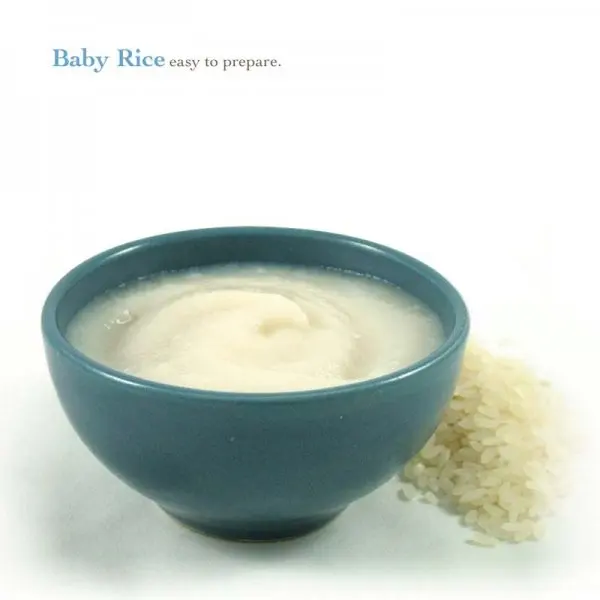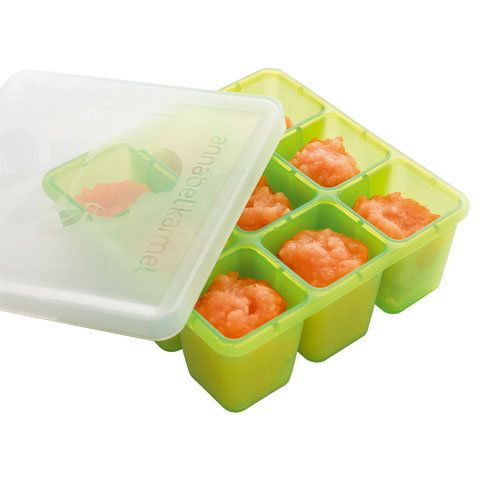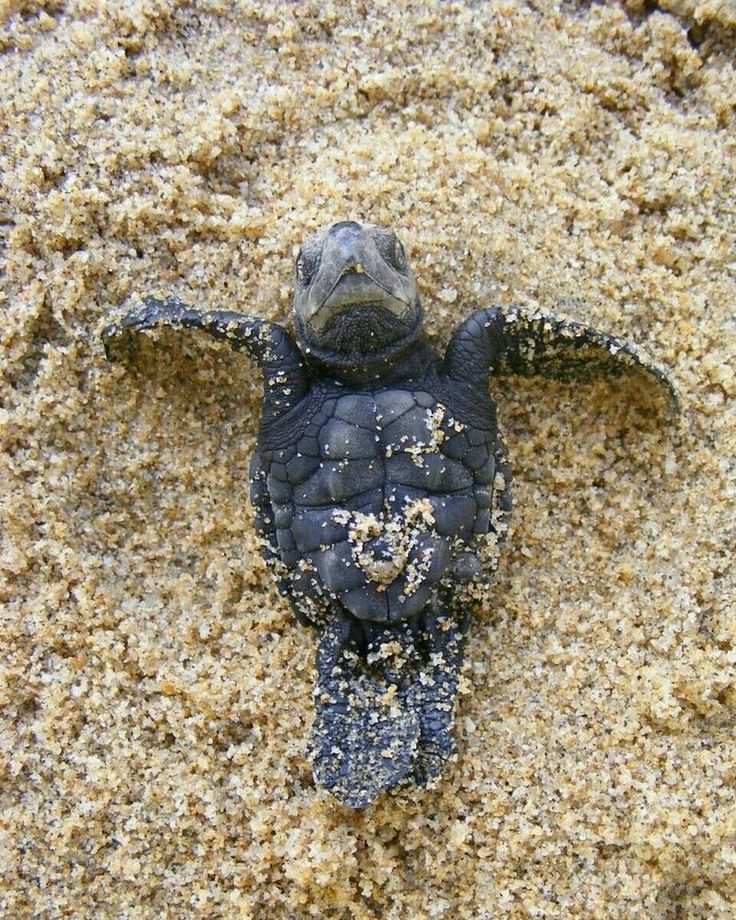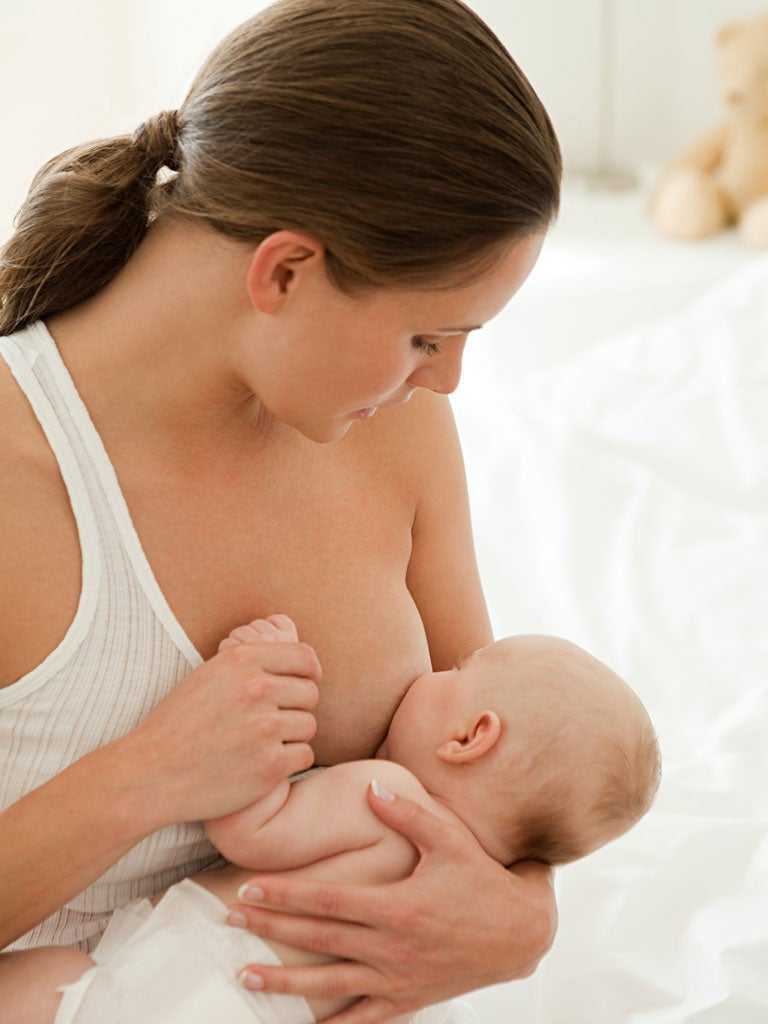What to feed a one year old baby for lunch
15 Easy Lunch Ideas for 1 Year Olds (For Home or to Pack!)
These lunch ideas for 1 year olds will give you inspiration the next time you want to pack a healthy toddler lunch at home or to pack for daycare or preschool. So whether your baby just turned one or you have a more experienced eater, need ideas for at home or to pack, these toddler lunch box ideas will help!
Lunch Ideas for 1 Year Olds
Coming up with toddler lunch ideas for 1 year olds is a challenge, to put it lightly! It’s so hard to know how hungry they’ll be, what food they’ll actually want to eat, how they’ll do with textures—and simply to come up with the ideas. To help, this list has easy ideas that you can serve at home or pack for daycare or preschool.
Food for 1 Year Old
One year olds are in a very specific phase of being able to eat more than they did as babies, but are still not able to chew everything that older toddlers and kids can. They are also notorious for having appetites that can range widely from day to day, so these ideas take both of those into accounts. The options here are easy to pack, but are also nutritious and filled with a range of textures and flavors.
Lunchbox Ideas for One Year Olds at Daycare
Any of these lunches can be packed to send to daycare or preschool. Or just to take on the go. I have a few lunchboxes and thermoses that I love, so see which might work best for you in your circumstances.
TIP: As always, adjust these toddler lunch ideas based on your one year old’s chewing ability, preferences, and allergies. Which is to say: Iff you see something that isn’t cut or prepared the way you know your toddler would need it to be cut or served, you of course have full permission to change it. I did my best here to visually show you suggested serving options, but you may need to adjust.
1. Easy Snack Box
I love muffin lunches since they allow me to make the main component ahead and then add in simple sides. This one has fresh blackberries, freeze-dried strawberries, O cereal, and Vegan Banana Muffins.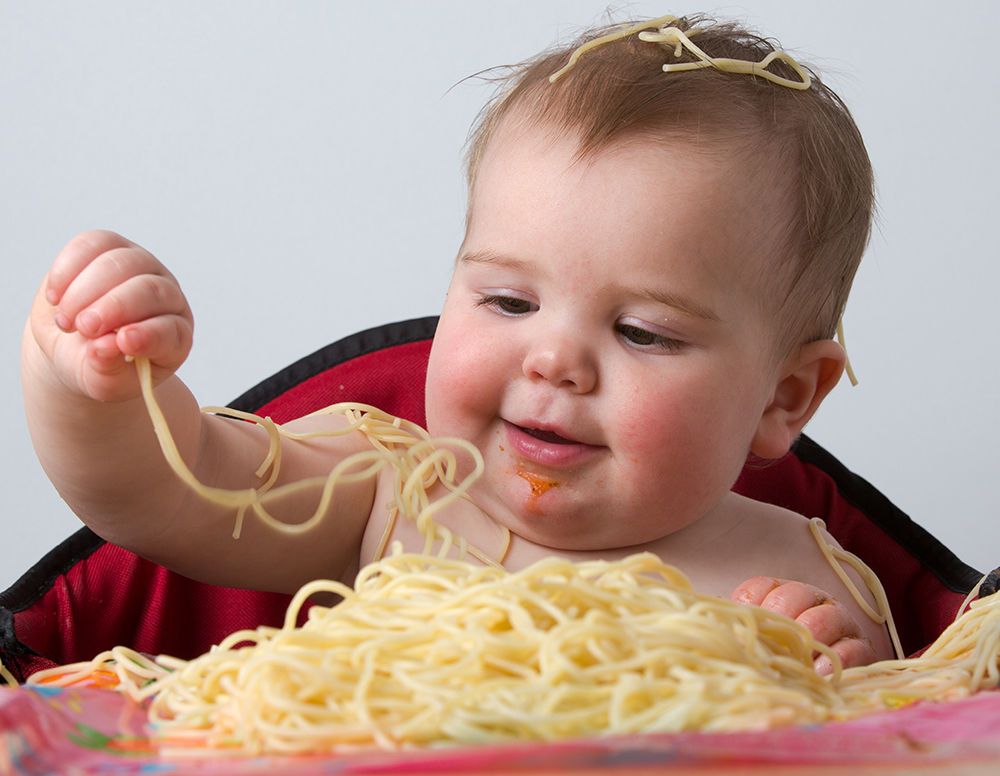 (Not every lunch has to have every single food group…do your best with what you have!)
(Not every lunch has to have every single food group…do your best with what you have!)
2. Pesto Pasta and Peas with Grapes and Fruit Leather
Having store bought pesto or homemade pesto on hand is an easy pasta sauce that’s flavorful and packed with nutrition—especially when paired with peas—but also kid friendly! Served with halved grapes and fruit leather, this is an easy and fun lunch.
3. Carrot Cake Muffins with Cottage Cheese
Muffins like my Carrot Cake Muffins are a great lunch option, as are Roasted Carrot Fries. We love both cold or slightly warm, so you have options when serving them at home or packed in a lunchbox. Pack a spoon for the cottage cheese if sending to daycare!
4. Easy Breakfast for Lunch
Pair Veggie Muffins with hard-cooked eggs and berries for a super easy and fully make-ahead kids lunch idea.
This super simple idea pairs quickly cooked chicken with roasted sweet potatoes and zucchini for a super easy make-ahead lunch.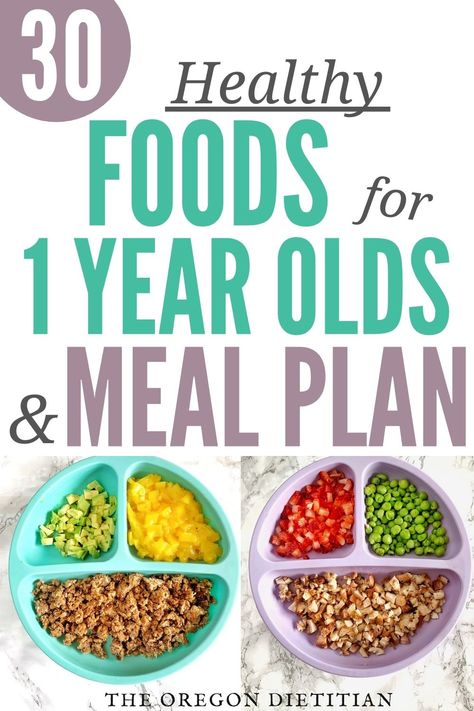 I love this one since it’s easy to adjust for an adult’s lunch too!
I love this one since it’s easy to adjust for an adult’s lunch too!
6. Veggie Grilled Cheese, Corn and Applesauce
Adding spinach to grilled cheese is a simple way to increase nutrition in a kid staple. (Just use the filling from my Spinach Quesadillas spread on bread and prepare like any other grilled cheese.) Pair with warmed frozen corn and an applesauce pouch.
TIP: See below for the recipe!
Incorporating broccoli right into the pasta sauce is a simple way to serve it up to one year olds. Try it with a fun pasta shape like stars and paired with simple sides like puffs, berries, and thawed frozen veggies.
8. Easy Finger Foods Lunch
Eggs, Roasted Butternut Squash, fruit and avocado is a super simple lunch idea. I often make the squash and eggs ahead and then warm very briefly to serve or pack. You can lightly rub a little lime or lemon juice on avocado to keep it from turning brown if packing in a lunch box.
9. Meatballs, Pasta and Fruit
My Chicken Meatballs with Sweet Potato are an easy make-ahead protein option that are super yummy and easy for one year olds to chew. Pair with pasta or a grain and fruit to round out the lunch.
10. Soft Roasted Chickpea Lunch
Pair Salty-Sweet Cinnamon Roasted Chickpeas with diced cheese, kiwi, and crackers for a super simple finger foods lunch for a one year old.
Make pizza for lunch a whole lot easier by starting with a tortilla. These are soft and easy to chew (use tortillas labeled “soft” for the best texture for little ones) and yummy—and boast a veggie punch from the pizza sauce.
12. Easy Hummus Lunch Box
I love using dips to help the kids get more interested in foods they may not love and this one year old lunch is a good example. Here, I paired hummus with bread strips, thinly sliced pepperoni, and sauteed green beans. Plus mini animal crackers and fruit.
I never thought I’d find it necessary to make simple sandwiches ahead, but these freezable PB&Js are so handy to have on hand! They thaw in a lunchbox and just streamline packing. You can use sunflower seed butter if needed to make them allergy-free.
You can use sunflower seed butter if needed to make them allergy-free.
These baked fritters are so good in the summer when there’s too much zucchini, or really any time of the year when you want a make-ahead lunch option with a veggie in the mix. I like to serve them diced with a dip like ranch, ketchup, salsa, or even bbq sauce.
You can make this with store bought dough or homemade and it only requires two other ingredients. It’s a fun lunch to make at home or to send in a lunchbox. I like to cut it into strips or cubes to ensure it’s easy for a one year old to chew. Here I paired it with matchstick cut apples and sliced cucumbers.
Healthy Sides for Lunches
If you need some ideas for what to pack with a lunch, these healthy snack options from the store are super easy options.
Best Lunch Boxes for Kids
All of the lunchboxes shown here are in my guide to lunchboxes here.
If you have any questions about food for one year old’s or any of the lunches shown here, please comment below.
 I appreciate all feedback and hearing from you all—it always helps to make my content so much better!
I appreciate all feedback and hearing from you all—it always helps to make my content so much better!Prep Time 10 minutes
Cook Time 6 minutes
Total Time 16 minutes
Author Amy Palanjian
Cuisine American
Course lunch
Calories 157kcal
Servings 2
Spinach Grilled Cheese
- ▢ 2 cups baby spinach (loosely packed)
- ▢ 1/2 cup shredded cheddar cheese
- ▢ 1 tablespoon cream cheese
- ▢ 1/4 teaspoon cumin
- ▢ 4 pieces whole grain bread
- ▢ 1 tablespoon butter
Place the spinach, cheese, cream cheese, and cumin in a food processor or blender. Blend until smooth, stopping to scrape down the sides of the bowl as needed.
Spread a thin layer of the spinach mixture onto 2 of the slices of bread. (You may have leftovers.) Add the second bread slices on top to make a sandwich. Add a thin coat of butter to the outside of each sandwich.
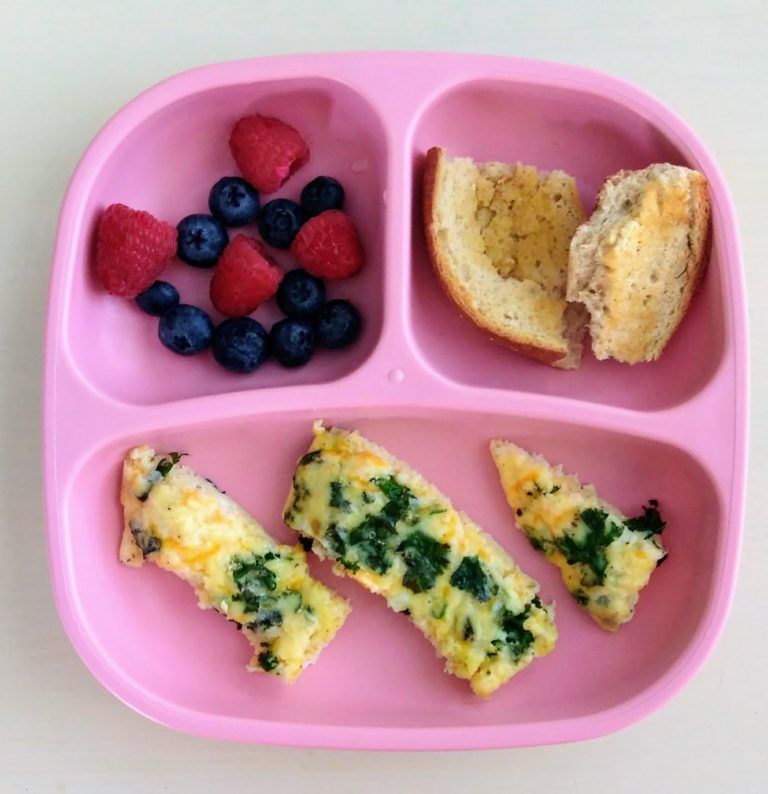
Warm a skillet over medium heat. When warm, cook each sandwich for 2-3 minutes per side or until warmed through and melty.
Serve warm in slices or cubes.
You can store any leftover spinach mixture in an airtight container in the fridge for 3-5 days to make additional sandwiches.
Here are other simple toddler lunch ideas to try too:
- Easy Snack Box with mini muffins, diced fruit, freeze-dried fruit, and dry cereal
- Pesto pasta with peas, fruit, and fruit leather
- Carrot Cake Muffins, Roasted Carrots, cottage cheese, halved grapes
- Veggie Muffins, hard-cooked eggs, raspberries
- Chicken and Sweet Potato Bowl with diced pineapple
- Broccoli Pesto Pasta with puffs and fruit
- Finger food lunch of scrambled eggs, roasted squash, avocado, berries
- Pasta and peas with butter, Chicken Sweet Potato Meatballs, and clementine
- Soft Roasted Chickpeas, cheese, kiwi, cheddar bunny crackers
- Pizza Quesadilla with berries
- Hummus Lunch with hummus, bread, pepperoni, animal crackers, and fruit
- Make-Ahead PB&J
- Baked Zucchini Fritters and tomatoes
- Pesto Pizza with sliced cucumbers
Calories: 157kcal, Carbohydrates: 4g, Protein: 9g, Fat: 12g, Saturated Fat: 8g, Polyunsaturated Fat: 1g, Monounsaturated Fat: 3g, Cholesterol: 38mg, Sodium: 241mg, Potassium: 220mg, Fiber: 1g, Sugar: 1g, Vitamin A: 3209IU, Vitamin C: 9mg, Calcium: 251mg, Iron: 1mg
Tried this recipe?Rate in the comments and tag @yummytoddlerfood on IG!
27 Easy Toddler Lunch Ideas For 1-year-olds
Posts may contain affiliate links or sponsored content. See Disclaimer and Disclosure for more details.
See Disclaimer and Disclosure for more details.
46046 shares
A list of 27 quick and simple lunch ideas based on what my one-year-old toddler has been eating for lunch. Easy toddler lunch ideas you can make in a few minutes.
This post was recently updated from 15 toddler lunches to 27 (since my second reached the toddler stage and I had more ideas to share)!
Lunch time can be extremely hectic with a toddler. They can go from happy to hangry in a matter of seconds. Therefore, lunch has to be quick and easy!
I’m a mom of two toddler boys (16 months apart). In my house lunch has to be fairly quick and easy to make to avoid these toddler tantrum meltdowns.
Even if lunch prep is quick, it doesn’t mean lunch has to be boring or unhealthy. I try to serve a veggie for lunch if I can and try to find easy and simple ways to make their lunches more fun (more on that here: 4 Ways to Make Toddler Meals Fun)
I also try to serve my toddler something different at least 5 days out of the week to make sure he is constantly being exposed to different foods. Exposure to different foods is one way to combat picky eating.
Exposure to different foods is one way to combat picky eating.
We also love to use left overs from dinner when we can because its quick and easy to heat up. It also means less thinking and planning for lunch time since its a meal that has already been cooked and put together.
Below I’m sharing 27 easy toddler lunch ideas based on what my toddlers actually eats for lunch! If you are looking for more meal ideas for babies or toddlers, check out more posts from my feeding series:
- 33 Toddler Dinner Ideas
- 18 Month Toddler Meals
- Toddler Daycare Lunch Ideas
Toddler Feeding Essentials
As shown in some of my photos I wanted to share my favorite toddler eating tools with you all! Here are some of my favorites that my toddlers use almost every day.
EZPZ Mini Mat – Silicone suction plates are so helpful for young eaters! My toddlers both used these from about 6-15 months old before they graduated to real plates.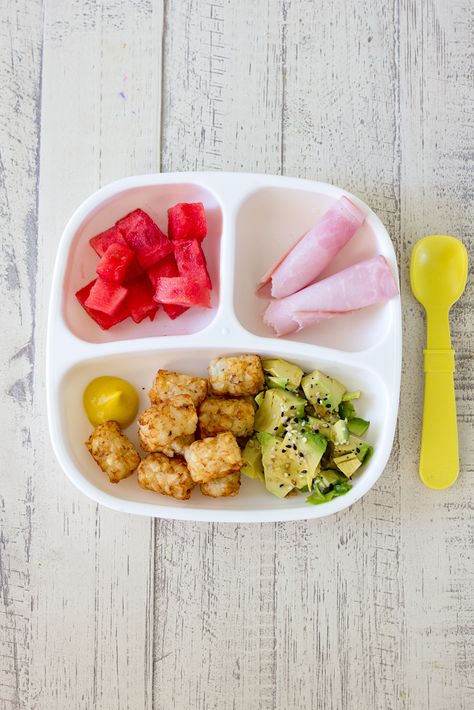 The EZPZ mini mat stays in place which makes it easier for them to grab food and also keeps plates from getting thrown on the floor. (Use Code EZPZ25LOVE for 25% off $75+)
The EZPZ mini mat stays in place which makes it easier for them to grab food and also keeps plates from getting thrown on the floor. (Use Code EZPZ25LOVE for 25% off $75+)
Munchkin Silverware Set – these have been a great go-to silverware set since my toddlers were both about 12 months old. They are so affordable and durable, we love them!
Pillowfort Plates – we love these plates and use them at almost every meal now that my boys have grown past the EZPZ Mini Mat. They are so durable and have held up great in the dishwasher for more than a year of use. Highly recommend them!
Munchkin 360 Cup – these are the best open trainer cups. Sippy cups can cause issues with oral development, but these cups are spoutless. My toddler loves them and they don’t spill or leak.
For a full list of my favorite feeding essentials, check out my list here: 10 Toddler Feeding Essentials.
Toddler Lunch Schedule
If your toddler is struggling with getting hangry (hungry + angry) before lunch or if your toddler is snacking all day and isn’t well at meal time, I highly recommend starting a daily meal-time schedule.
I am a somewhat “type a” person and have realized that our family thrives on routine and predictability. My toddler have been on schedules since they were very little and it has worked great for our family. We followed the Babywise Method and both are extremely happy and thriving boys.
Even if you didn’t follow a feeding schedule when your toddler where babies, you can easily start one once they reach toddlerhood! It can help prevent meltdowns before meal time and can help your toddler regulate their metabolism by eating at regularly spaced and predicable intervals.
Depending on if your toddler is one or two naps, here are the one-year-old meal schedules we have used:
2 Nap Meal Schedule
- 7:30 am – Breakfast
- 9:30 am – Snack
- 10:00 am – Nap 1
- 12:00 pm – Lunch
- 2:00 pm – Nap 2
- 3:30 pm – Snack
- 5:30 pm – Dinner
- 7:30 pm – Optional snack
- 8:00 pm – Bed
1 Nap Meal Schedule
- 7:30 am – Breakfast
- 9:30 am – Snack
- 12:00 pm – Lunch
- 12:30 pm – Nap
- 3:30 pm – Snack
- 5:30 pm – Dinner
- 7:30 pm – Optional snack
- 8:00 pm – Bed
It’s best to schedule meal and snack times about 2-3 hours apart. This helps your toddler build up some hunger pressure so that they eat well, but also prevents snacking all day and not eating at meal time. Of course, this is just our loose schedule and if my toddlers are actually super hungry and cranky or if we are out and about we will deviate from this schedule.
This helps your toddler build up some hunger pressure so that they eat well, but also prevents snacking all day and not eating at meal time. Of course, this is just our loose schedule and if my toddlers are actually super hungry and cranky or if we are out and about we will deviate from this schedule.
Bedtime Snack. Our bedtime snack is optional and changes daily, although recently we have been doing a bedtime snack most days. My older toddler never needed a bedtime snack and would sleep through the night just fine without one. Some sleep consultants recommend avoiding a bedtime snack since it can interfere with your toddler’s sleep if its too close to bedtime.
My second son, however, does do much better with a bedtime snack. For a bedtime snack be sure to keep it boring, low in sugar, and high in protein.
Easy Pre-Made Toddler Food
If you are looking for some pre-made or easy grab and go options for your toddlers, here are some of our favorites:
- Daily Harvest (Use this link for up to $40 off!)
- Serenity Kids (Use JESSICA15 for 15% off)
- Cerebelly (Use pineconesandpacifiers15 for 15% off)
Toddler Lunch Meal Ideas
- Avocado toast w/ Fruit.
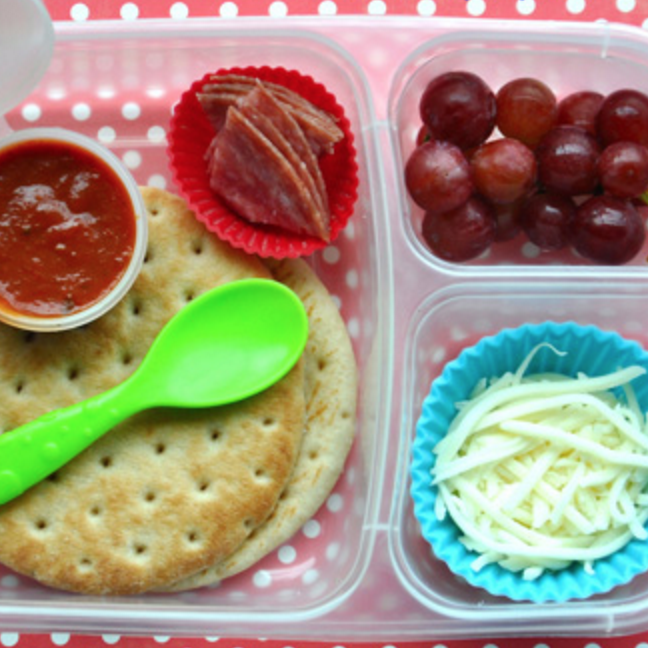 Side of kiwi. Avocado is such an awesome healthy fat for babies and toddlers and my toddler loves it! We do avocado by itself, avocado sandwiches, avocado on toast, or even as a dip sometimes. For young toddlers try very lightly toasting the bread and don’t put on too much avocado or it will be a mess.
Side of kiwi. Avocado is such an awesome healthy fat for babies and toddlers and my toddler loves it! We do avocado by itself, avocado sandwiches, avocado on toast, or even as a dip sometimes. For young toddlers try very lightly toasting the bread and don’t put on too much avocado or it will be a mess.
- Pizza w/ healthy sides. Side of peas and mandarin oranges. Who doesn’t love pizza once in a while!? I try to make this meal a little healthier by serving it with a side of fruit and veggie. My toddler actually didn’t really like pizza for a while so it took quite a few exposures. This meal was leftover pizza from the night before!
- PB & J w/ turkey on the side. Side of turkey and kiwi. Another meal that sometimes gets a bad wrap, but its quick, easy, and can offer a serving of protein and whole grain. We also like to choose natural, organic Jelly with no sugar added when we can.
- Fish Sticks w/ veggies (from KidFresh brand).
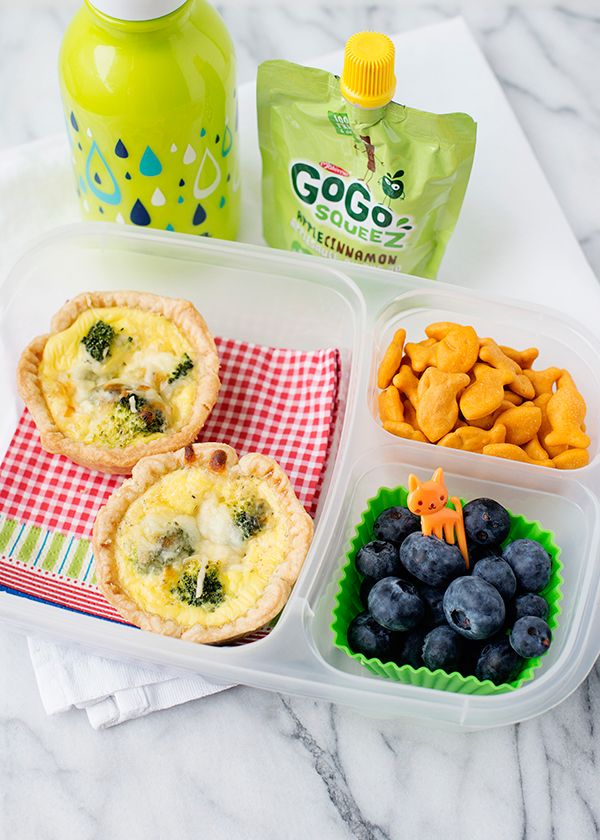 Side of avocado and mixed veggies. We don’t eat much fish, so fish sticks can be a great way to expose your toddler to fish if needed. The KidFresh brand also has chickpeas in the breading so I feel great serving him these! These fish sticks from frozen and heat up quickly in the microwave.
Side of avocado and mixed veggies. We don’t eat much fish, so fish sticks can be a great way to expose your toddler to fish if needed. The KidFresh brand also has chickpeas in the breading so I feel great serving him these! These fish sticks from frozen and heat up quickly in the microwave.
- Black Beans & Corn w/ Turkey Lunch meat. Side of turkey and bananas. This is another meal brought to you by dinner leftovers. Even if you wanted to make this from scratch for lunch these staple foods can be heated up in just a few minutes. This is actually one of my toddler’s favorite meals!
- Macaroni & Cheese w/ Sides. Side of kiwi and peas. We often like to stir in veggies to our mac n’ cheese (normally peas), but it can also be served on the side to make it a more well-rounded meal.
- Veggie Corn Dog w/ avocado (from MorningStar Farm brand). Side of avocado and nectarine.
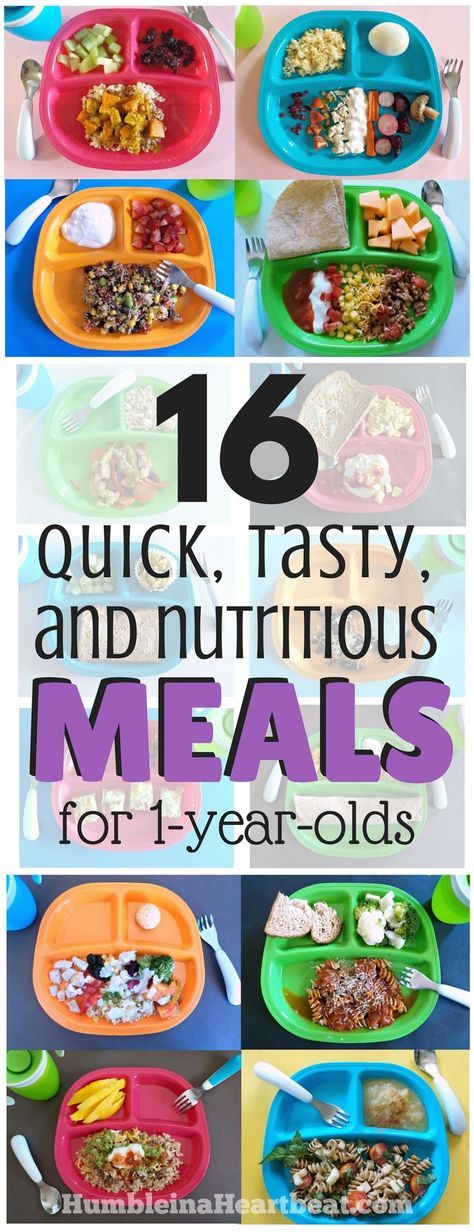 This is another great frozen food item that heats up very quickly for lunch! If you toddler is a little younger you can cut up into bite size pieces or if they are older leave the corn dog whole on the stick. These are always a hit in our house!
This is another great frozen food item that heats up very quickly for lunch! If you toddler is a little younger you can cut up into bite size pieces or if they are older leave the corn dog whole on the stick. These are always a hit in our house!
- Baked Beans w/ Turkey & veggies. Side of turkey and green beans. My husband LOVES baked beans so we decided to give our toddler a taste and he was a fan too. Beans are a great source of protein! We try to choose ones with as little sugar as possible and also pair it with a veggie and meat to make the meal a little more rounded.
- Broccoli “Littles” w/ banana & pb (Dr. Praeger’s brand). Sides of bananas with peanut butter and avocado. These are one of our most favorite frozen foods! My toddler loves them and I feel great feeding them to him. The ingredients are super clean and they heat up quickly in the microwave. He eats these for breakfast, lunch, and dinner!
- Turkey & Crackers w/ fruit & veggies.
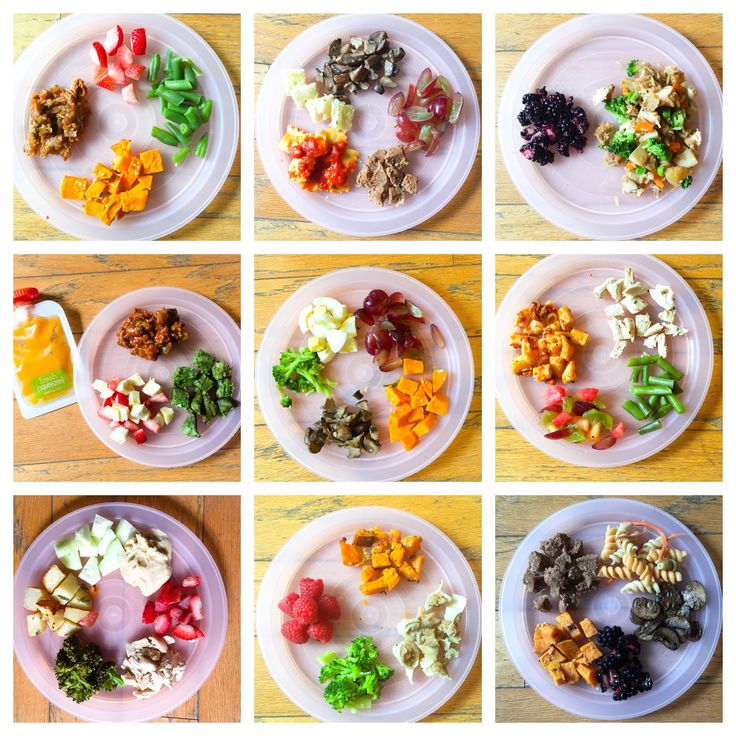 Side of veggies and nectarine. This is a very low maintenance meal and can also be served as a snack! If you toddler is a little more advanced try stacking the turkey (& maybe cheese) on top of the crackers for a fun lunch ideas.
Side of veggies and nectarine. This is a very low maintenance meal and can also be served as a snack! If you toddler is a little more advanced try stacking the turkey (& maybe cheese) on top of the crackers for a fun lunch ideas.
- Pulled Chicken w/ veggies. Side of cucumbers, tomato, and homemade tzatziki for dipping. This greek style lunch really mixed things up and was left over from dinner. This was my toddler’s first exposure to cucumber and tomatoes are always a hit with him. I always try to have a “safe food” when serving new foods or things he might not like.
- Quesadilla w/ chicken on the side. Side of pulled chicken and corn. This was an avocado “quesadilla” since we have been trying to limit dairy recently. He loved it! Quesadillas are fairly quick to heat up on the stove. The chicken was instantpot chicken left over from dinner and is another one of his favorites.
- Grilled Cheese w/ Fruit & Veggies.
 Side of kiwi and mixed veggies. I served this grilled cheese “open faced” because my toddler is not a huge fan of sandwiches. Regular grilled cheese can also be a great option and both offer a good serving of dairy and whole grains. Like normal, I served with a side of fruit and veggies to make the meal a little more nutritions.
Side of kiwi and mixed veggies. I served this grilled cheese “open faced” because my toddler is not a huge fan of sandwiches. Regular grilled cheese can also be a great option and both offer a good serving of dairy and whole grains. Like normal, I served with a side of fruit and veggies to make the meal a little more nutritions.
- Turkey w/ Applesauce. Side of applesauce and mixed veggies. Sliced turkey is one of our go-to’s for an easy lunch or snack. I squeezed out an unsweetened applesauce pouch so he could practice spoon feeding and also added some microwaved frozen veggies.
- Spinach “Littles” w/ Black beans (from Dr. Praeger’s brand). Side of butternut squash and black beans. This is a great example of serving your children things you don’t necessarily like in order for them to get exposure. I’m not a huge fan of squash, but my toddler is! This is frozen squash microwaved and the Spinach Littles also heat up quickly in the microwave.

Bonus Lunch Ideas
Since my second-born is now 1 years old, I decided to update this post to share some additional bonus lunch ideas based on what my younger son is now eating for lunch. Here are 12 more easy toddler lunch ideas for one year olds!
- Grilled Broccoli & Cheese w/ Raspberries. A twist on broccoli and cheese, I like to make regular grilled cheese, but with broccoli inside! Both of my boys love this and don’t mind the broccoli at all. Its a great way to serve veggies for lunch. Side of raspberries.
- Pesto Pasta with Veggies. Pasta is pretty quick and easy to make for lunch. If you are feeling really inspired, try making some veggie noodles out of zucchini or squash! Here we had normal linguine noodles with pesto, carrots, broccoli, and cauliflower. Side of mandarin oranges and avocado.
- Broccoli & Cheese Quesadilla w/ Avocado and fruit.
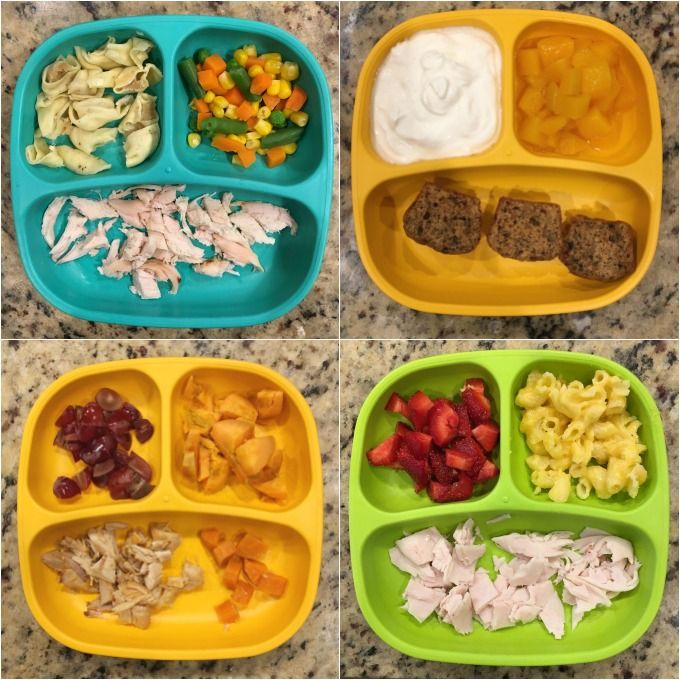 A cheese quesadilla with broccoli cooked inside. Like with broccoli grilled cheese, my boys don’t mind the added veggies at all (they might even prefer it to regular quesadillas). Side of avocado and grapes.
A cheese quesadilla with broccoli cooked inside. Like with broccoli grilled cheese, my boys don’t mind the added veggies at all (they might even prefer it to regular quesadillas). Side of avocado and grapes.
- Veggie Egg Frittatas w/ Bananas & pb (From Veggies Made Great). A quick and easy way to serve veggies at lunch! These heat up in the microwave in less than a minute and are perfect for breakfast, lunch, or snack. Side of banana with peanut butter and whole milk string cheese.
- Tuna w/ Pico & Avocado. Canned tuna or salmon can be a great way to introduce fish to your toddler or have an easy serving of fish for lunch. Side of pico, mandarin oranges, and avocado.
- Fried egg w/ Meat & Fruit . Eggs don’t just have to be for breakfast! They are packed with protein and healthy fats. I don’t always have time to cook eggs for breakfast, but they are a fan favorite with boy my boys.
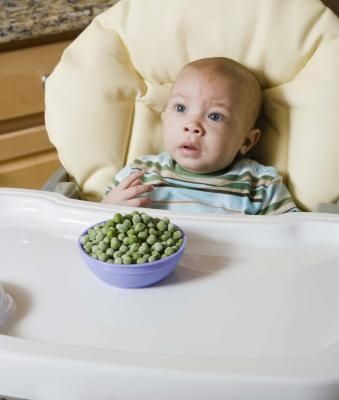 Here we had a fried egg, turkey lunch meat, and mandarin oranges.
Here we had a fried egg, turkey lunch meat, and mandarin oranges.
- Cauliflower Tots w/ Fruit & Cheese (From Green Giant Brand). We have been loving this alternate to potato tots. I cook them in the air fryer for just a few minutes and they come out perfectly crisp on the outside and soft on the inside. Side of whole milk string cheese and grapes.
- Crepes w/ Broccoli & Cheese eggs . If you haven’t made crepes, I highly recommend giving it a try! I was very surprised how easy it was and how much my boys loved them. My 2 year old at the crepe rolled up like a burrito and my 1 year old at them deconstructed. Here we had crepes with strawberries and whipped cream, blueberries, and eggs with broccoli and cheese.
- Peanut Butter Toast w/ Fruit & Cheese. Toast with peanut butter (or other nut butter) cut into bites or strips, finely sliced pear, whole milk string cheese, and mandarin oranges.
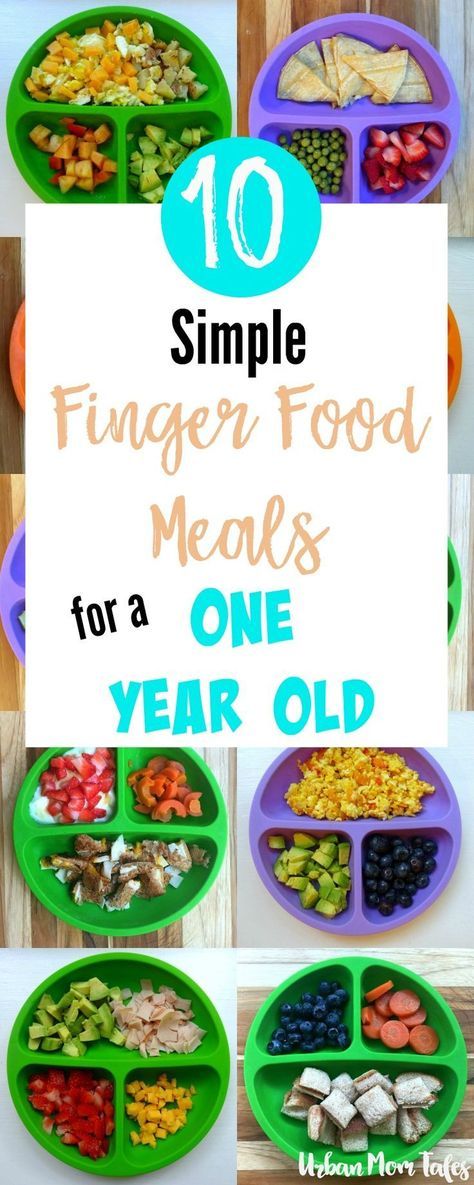
- Turkey Snack Tray. Snack trays are always a hit at our house! Basically, its just a bunch of lunch sides served in smaller portions so they get a wider variety of things to chose from. Turkey, peas, whole milk string cheese, thinly sliced red pear, avocado and dates.
- Cheese & Cracker Snack Tray. Snack tray with crackers, grapes, whole milk string cheese, avocado, and blueberries. You could also make this a little more fun by adding more varieties of cheese and crackers.
- Fruit & Veggie Snack Tray. Snack tray with raspberries, cheddar cheese, avocado, thinly sliced pear, whole milk string cheese, turkey, cauliflower pretzel sticks, peas and carrots.
Thanks for stopping by! Want to see more toddler meal ideas? Check out toddlermealideas.com
>> Shop our favorite feeding supplies from EZPZ <<
Use code EZPZ25LOVE for 25% off $75+
You might also like these recent related posts:
46046 shares
How to feed a child in 1 year? Balanced baby nutrition: sample diet
Proper nutrition of a child in a year is an important condition for harmonious growth and development.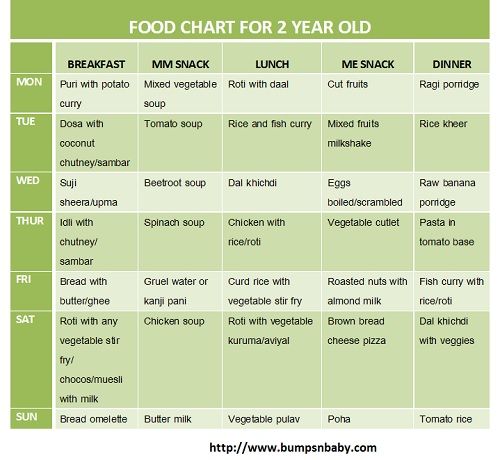 In addition, a properly composed diet helps to strengthen the immune system. Receiving new products, the baby gradually gets acquainted with the diet. Pediatricians advise paying attention to the child's diet, its proper balancing.
In addition, a properly composed diet helps to strengthen the immune system. Receiving new products, the baby gradually gets acquainted with the diet. Pediatricians advise paying attention to the child's diet, its proper balancing.
Nuances of nutrition
The diet of a child in 1 year is subject to the following principles:
- should be complete, meet all the needs of the body, provide vitamins, micro- and macroelements;
- diversity. As many combined foods as possible should be present in the diet daily;
- all food must be chopped.
Specialized foods must be included in order to properly balance the diet. They should be designed according to the needs of the child's body in a year. If you have any doubts or questions regarding the nutrition of your baby, you can seek advice from our doctors. They will remotely select an individual diet, tell you about all the nuances of the nutrition of one-year-old babies.
The diet must not be violated
The most advantageous is the diet according to the schedule.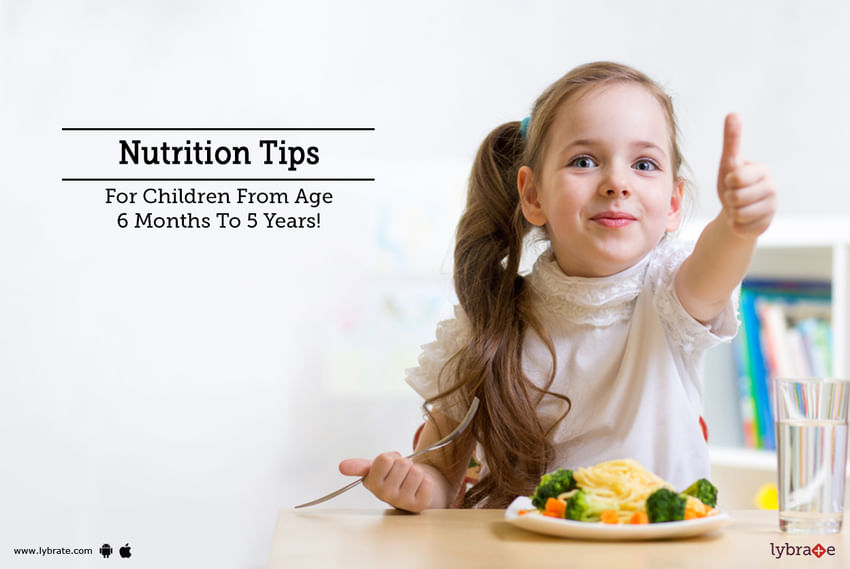 An individual nutrition program contributes to the rapid accustoming of the child to the daily routine. Even intervals between meals will not let the baby get hungry. According to the WHO, a child's diet at 1 year old should include breakfast, lunch, dinner, and an afternoon snack.
An individual nutrition program contributes to the rapid accustoming of the child to the daily routine. Even intervals between meals will not let the baby get hungry. According to the WHO, a child's diet at 1 year old should include breakfast, lunch, dinner, and an afternoon snack.
Meal plan for the day:
| Name | Description |
| 9.00 - breakfast | If the child gets up early, in this case it is permissible to feed an hour earlier. All other meals are shifted by an hour |
| 12.30 - lunch | Before dinner, it is recommended to take a walk, which will increase the appetite. For long walks, a snack is allowed two hours before the main meal. |
| 16.30 - afternoon snack | The amount of food is small. Eating easy |
| 19. | Dinner is served on the table two hours before bedtime. |
Important! When cooking, it is necessary to refuse fried, fatty and fried foods. The first meat broths merge. Salt and sugar are added in a minimal amount.
Which products to prefer
WHO recommends including the following foods in the children's menu:
- dairy products. Children under the age of one year do not give milk in its pure form. It is replaced with breast milk or mixtures. Kefir and yogurt are introduced gradually. Their fat content should not exceed 3.2 percent. Sour cream and cheeses are allowed to be given no more than twice a week;
- cereals. Porridge for a one-year-old child is given only for children. Adult coarse cereals are poorly digested in the baby's body. Allowed: oatmeal, buckwheat, millet, corn, rice porridge;
- vegetables fruits. By the age of 1, the child is familiar with apples, pears, bananas, prunes, zucchini, broccoli, carrots, potatoes.
 After a year, kiwi, beets, peas, apricots, beans are introduced into the diet. Legumes are given twice a week. The rest of the vegetables and fruits are allowed for use every day;
After a year, kiwi, beets, peas, apricots, beans are introduced into the diet. Legumes are given twice a week. The rest of the vegetables and fruits are allowed for use every day; - meat fish. Hake, pollock, cod are given twice a week, low-fat meat varieties - daily;
- oil. Butter and vegetable oils are added to ready meals. If the child already chews well enough, it is permissible to smear butter on bread. vegetable oils are chosen only unrefined;
- eggs. Up to a year it is allowed to introduce quail eggs, after a year they give chicken no more than three times a week.
Example from practice: One-year-old Pasha's mother made the following menu for him for the day, which she plans to feed him until he is 1.5 years old: For breakfast, porridge/vegetable dishes, cottage cheese 200 g, drink 100 ml. Lunch consists of salad - 30 g, soup - 50 g, second meat course - 50 g, vegetables / cereals - 70 g, compote - 100 ml. For an afternoon snack, mom offers ryazhenka or kefir - 150 ml, cookies, crackers - 15 g, juice, fruits - 100 g. For dinner, cereals / cottage cheese / vegetables are served - 180 g, fermented milk products - 100 ml, fruits - 50 g.
For dinner, cereals / cottage cheese / vegetables are served - 180 g, fermented milk products - 100 ml, fruits - 50 g.
Further, the weight of the products will gradually increase with the age of Pasha. Mom made up the optimal variant of the diet together with specialists.
Prohibited products for children from the year
The list of products not recommended for baby food includes:
- any kind of sausages, sausages;
- fried food;
- smoked meats;
- exotic vegetables, fruits;
- caramel, chewing gum;
- products containing flavor enhancers, dyes; flavors.
Children are limited in food with a lot of cholesterol, nuts. The latter can cause an allergic reaction. It is not advisable to give mushrooms, as they overload the child's digestive tract. For all questions, you can contact our doctors at any time of the day. They will remotely adjust the diet and help balance it.
Norm of food per day for a one-year-old child
The total daily calorie content should not be less than or more than 1300 Kcal. However, these figures are relative, as each child is individual. Someone develops quickly, and someone vice versa. And such children may need a supplement in the diet.
However, these figures are relative, as each child is individual. Someone develops quickly, and someone vice versa. And such children may need a supplement in the diet.
For breakfast, babies should consume at least 300 ml, for lunch - 420 ml, for an afternoon snack - 180 ml, for dinner - 300 ml.
Dr. Komarovsky advises to purchase only seasonal products. In his opinion, they will be able to provide the maximum benefit for the growing body of the child.
One year old baby menu for every day
Experienced doctors recommend feeding the baby up to 6 times a day. There should be 4 main meals.
Breakfast
In the morning, it is preferable to give milk porridge. Milk is diluted with water before use. Proportions for cereals: 200 ml of milk per 2 tablespoons of cereals. Twice a week it is permissible to serve an omelet from 1 egg. Prepare an omelette for a couple. You can add dill. It stimulates digestion.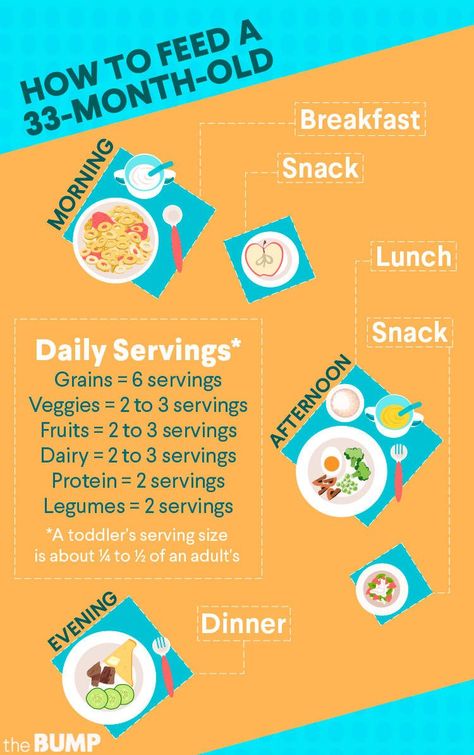 Wash down with compote, weak tea.
Wash down with compote, weak tea.
Snack
Yogurts and fruit purees are allowed here. They stimulate the production of gastric juice, digestion. A healthy snack is a baked apple with cookies. Fruit purees from jars, children's drinking yogurts are suitable.
Lunch
Lunch is the main meal. It can be only the first or second course, or maybe all together. Soups are cooked thick, rich, satisfying. Broths are prepared on boneless pulp. The first is drained, and vegetables are added to the second broth. Let's add some oil. The second offers cereals on the water, vegetables, salads, meat or fish. Spices, roasts are excluded.
Snack
For a small snack, cottage cheese casseroles, milk porridges, cheesecakes, cookies with compote, milk are suitable. Cow's milk is administered with caution. Start with small amounts, diluted with water. Observe the reaction, as cow's milk is considered an allergen.
Dinner
Dinner is scheduled five hours after the afternoon snack.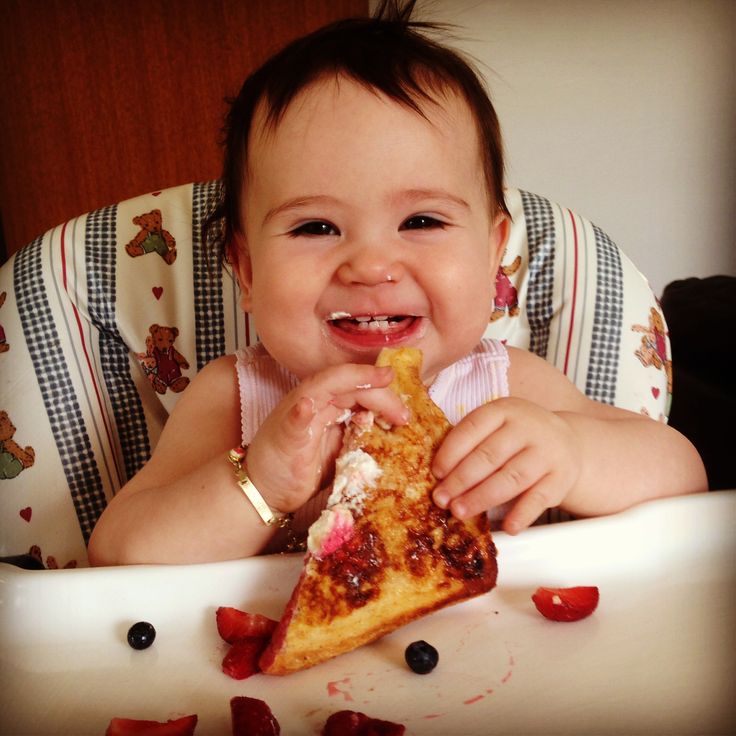 Vegetable puree, porridge, stew with meat or fish are served. It is allowed to add a little oil to the stew.
Vegetable puree, porridge, stew with meat or fish are served. It is allowed to add a little oil to the stew.
When breastfeeding, the second dinner is allowed in the form of mother's milk. Children who are used to eating at night are gradually weaned from night feedings.
What to consider when formulating a diet
The nutrition of a one-year-old child should be in compliance with the regimen. You can also create a kind of ritual that will look like a joint table setting, decoration with bright napkins, original food serving.
If for some reason the child refuses to eat this or that product, he is not completely excluded from the diet. It is recommended to add it in small quantities, mixing with the main dish.
If the baby refuses to eat, it is recommended to shift the time. Perhaps the child did not have time to get hungry. Or you can go for a walk and work up an appetite.
All meals are served in turn. Don't put everything on the table at once. In this case, the baby will be confused, will try to try everything at once.
In this case, the baby will be confused, will try to try everything at once.
It is necessary to introduce new products with caution, in turn, starting with small portions. At the same time, the reaction of a small organism to innovations is closely monitored. In case of allergic reactions, the product is completely excluded.
Sweets in the form of confectionery, sweets, chocolate are not offered to kids. Small amounts of honey, syrups, jams, dried fruits, cookies are allowed.
FAQ
What must be present in the menu of a child at 1 year old?
+
The diet must be present: meat, dairy products, fruits, vegetables, bread, butter. Fish and eggs are given up to three times a week.
What are the most common mistakes parents make when preparing meals?
+
The most common mistake is a monotonous diet, consisting of the same products.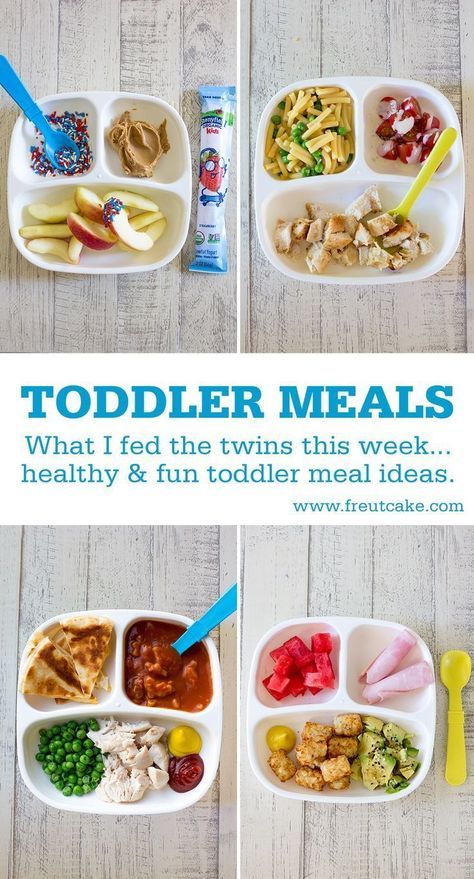 It is important to try to feed your baby a variety of foods. This will allow him not only to get acquainted with new products, but also to replenish the stocks of necessary substances.
It is important to try to feed your baby a variety of foods. This will allow him not only to get acquainted with new products, but also to replenish the stocks of necessary substances.
Is it permissible to include solid food in the diet if the teeth erupted a little?
+
Solid foods help form healthy eating habits. In addition, it is useful for teething. Hard pieces help form the correct bite.
Should I put my baby to sleep after eating?
+
After eating, the baby is drawn to sleep. However, putting him to bed right away is not right. If the child walked a lot, spent a lot of energy, in this case, yes, it is allowed to sleep after eating. In all other cases, after eating it is better to play.
What to do if a child refuses to eat with everyone at the age of one?
+
You can't force feed a child. It is important to form a strong habit with him that all meals with the family at a certain time.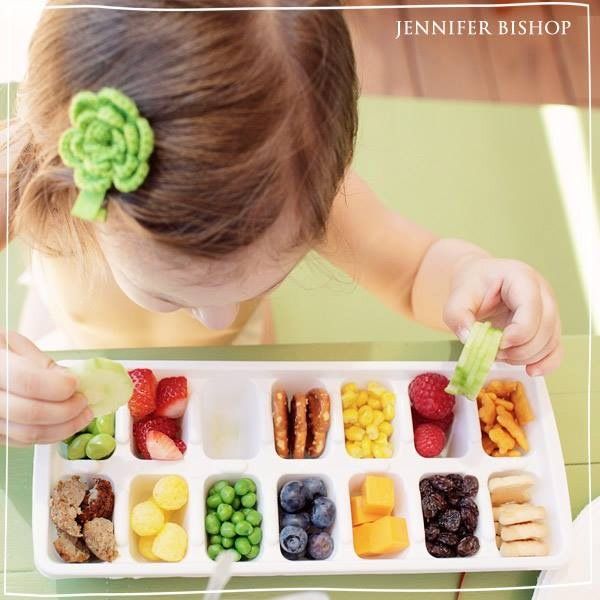 If for some reason he refuses to eat, then until the next feeding he remains hungry. Good habits are formed from childhood.
If for some reason he refuses to eat, then until the next feeding he remains hungry. Good habits are formed from childhood.
Expert opinion
The diet of a child in one year should be balanced and varied. Do not try to feed your baby the same food. In this case, he will not get the necessary vitamins, macro- and microelements that are important for development and growth. When feeding, it is advisable to observe a strict regime, accustoming the baby to order. Do not forget about harmful foods that are completely excluded from the diet.
We publish only verified information
Article author
Pruzhinin Mark Yulievich pediatrician
Experience 30 years
Consultations 1572
Articles 104
An experienced pediatrician with extensive experience and clinical experience in various medical organizations in the field of general pediatrics, resuscitation-anesthesiology and neuroinfection. Works with leading experts, attends international and Russian conferences.
Works with leading experts, attends international and Russian conferences.
What to feed a child in a year - a menu for the whole day + 3 simple recipes for cooking a one-year-old child
At the age of one year, a child must begin to be taught to eat "adult" food. Of course, this should be done gradually: after all, the baby's digestive system is still immature. The first step towards a common family table should be a smooth rejection of "infant" food in the form of liquid puree. At the same time, this form of food processing is not at all banned. Agree, mashed potatoes and liver pate are loved by both adults and children.
Products for a one-year-old baby should not be ground in a blender, as you used to do before, but with a fork or a special crusher. Thus, the baby will learn to chew small pieces of food. A baby already has several teeth by the year (on average eight) - you need to learn how to use them!
If up to this point you have preferred to feed your child with ready-made "canned" food, it's time to start gradually reducing the proportion of "canned" food in your child's diet.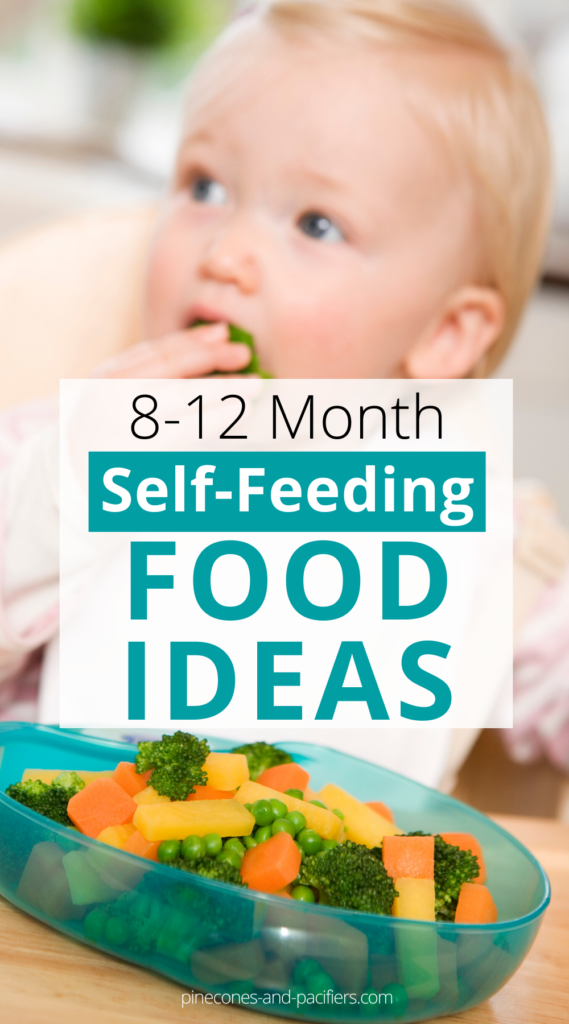 It's time for the baby to get used to the range of tastes, colors, smells and density of dishes that are served at the table in his family.
It's time for the baby to get used to the range of tastes, colors, smells and density of dishes that are served at the table in his family.
If, after a year, the mother and the child consider it necessary to continue breastfeeding, good. However, you should know that at this age, breast milk for a baby is basically not food, not a source of essential nutrients, but a symbol of closeness with mom, a means of calming, and sometimes entertainment. And the baby receives everything necessary for its growth and development with normal “human” food.
If the baby refuses to eat, put the food on a multi-colored "rainbow" plate. Scientists have proven that the bright colors in which the dishes are painted stimulate the appetite!
Contents:
- Daily menu for a one-year-old baby
- Baby food. Cooking porridge
- Goat and cow milk. Harm or benefit?
- Child's diet at 12 months. Meat and vegetables
- How to raise a child prodigy? Feed him!
Daily menu for a one-year-old baby
The basis of the food of a one-year-old baby and after is milk and products derived from it, meat, cereals, vegetables and fruits in various combinations.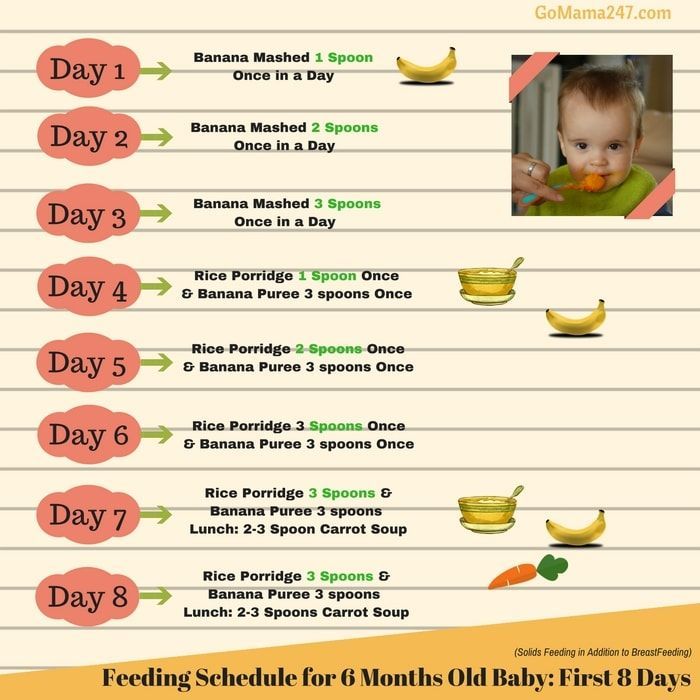
Breakfast
The best breakfast for a baby is milk porridge with fresh fruits or raisins, prunes, dried apricots. Try not to add sugar to the dish, and milk can be diluted with water at a ratio of 1 to 1 at first.
Lunch
For lunch, offer your child vegetable soup or borscht, mashed potatoes from those vegetables that the baby loves (this can be potatoes, cauliflower and broccoli, zucchini, pumpkin, peas, beets, carrots in various combinations), meat or fish meatballs, steamed chicken cutlets or liver pate. Some children are happy to eat shrimp - try offering them to the baby, just a little at first, because seafood can cause allergies.
Afternoon snack
For an afternoon snack, the baby will enjoy a cup of kefir or baby yoghurt with a cookie or a piece of cake.
Dinner
The last meal - before bedtime - may include formula (if the child is still eating it), thin porridge with milk, or kefir.
Snacks and Drinks
Fruit, dryers and crackers, neutral crackers (without salt and sugar) can serve as excellent “snacks” during the day.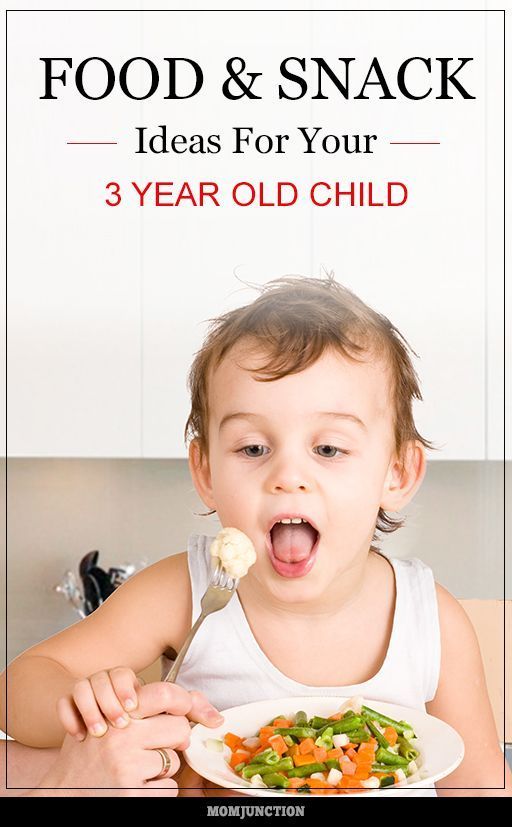 All this can be taken with you for a walk and for a visit. The task of parents is not to overfeed the baby with these treats so that he eats well during basic meals.
All this can be taken with you for a walk and for a visit. The task of parents is not to overfeed the baby with these treats so that he eats well during basic meals.
As a drink for a child of one year old, various compotes, a rosehip drink, lightly sweetened and lightly colored tea are suitable.
Children usually like fruit juices very much, but you shouldn't get carried away with them: they are not very good for teeth and stomach.
Child nutrition. Cooking porridge
Any pediatrician will tell you that porridge is considered the main diet for a young child. Today we will talk a little about the nutrition of babies, and how to properly cook porridge, and about what they are like in general.
So, let's immediately note that cereals can be introduced into the child's diet only after your baby has already tasted fruit or vegetable puree and is used to such food. Porridges are most often prepared with water or special milk, since the well-known cow product can cause unnecessary reactions.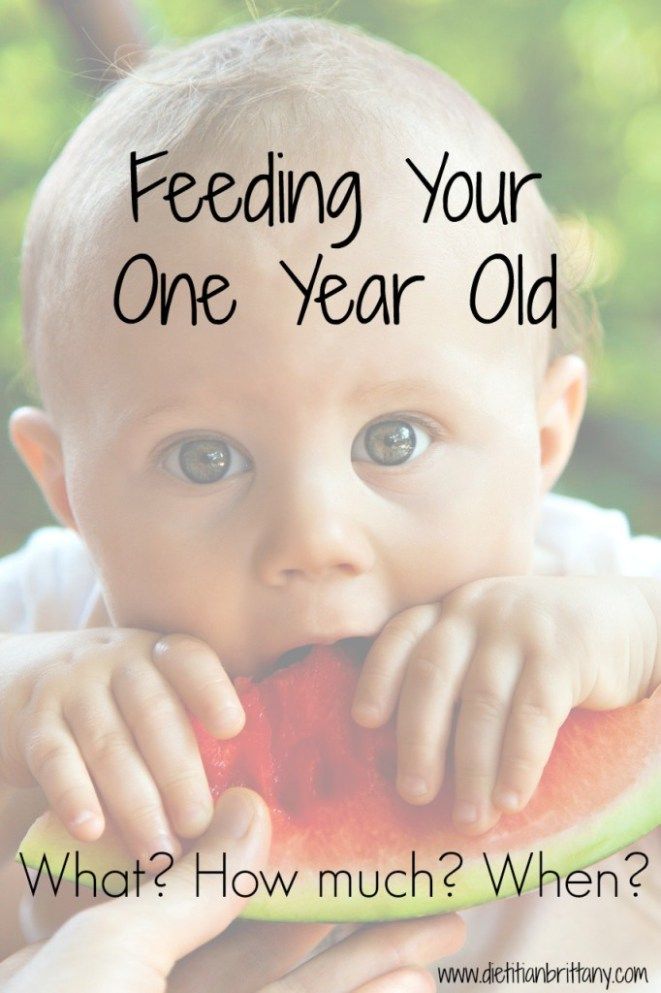 There are a huge number of types of cereals today, so you will always have plenty to choose from.
There are a huge number of types of cereals today, so you will always have plenty to choose from.
Returning to the conversation about cooking cereals, I would like to note that you can also cook special medicinal cereals if your baby suddenly starts having problems with the tummy. Such cereals usually do not add such an additive as fructose or fruit fillers. Cooking porridge, as we have already noted, is better on water, but only in the process of cooking you can already add a little breast, adapted milk or a mixture. But do not think that such cereals are completely bland and tasteless. If mommy cooks them correctly, then the benefits for the baby and his health are guaranteed. If you don't know how to prepare healthy meals for a one year old baby, in the section below you will find some easy recipes!
Porridge recipe
Porridges contain slow carbohydrates, therefore, when digested, they will leave a feeling of satiety for a long time. Semolina porridge is recommended to cook for breakfast.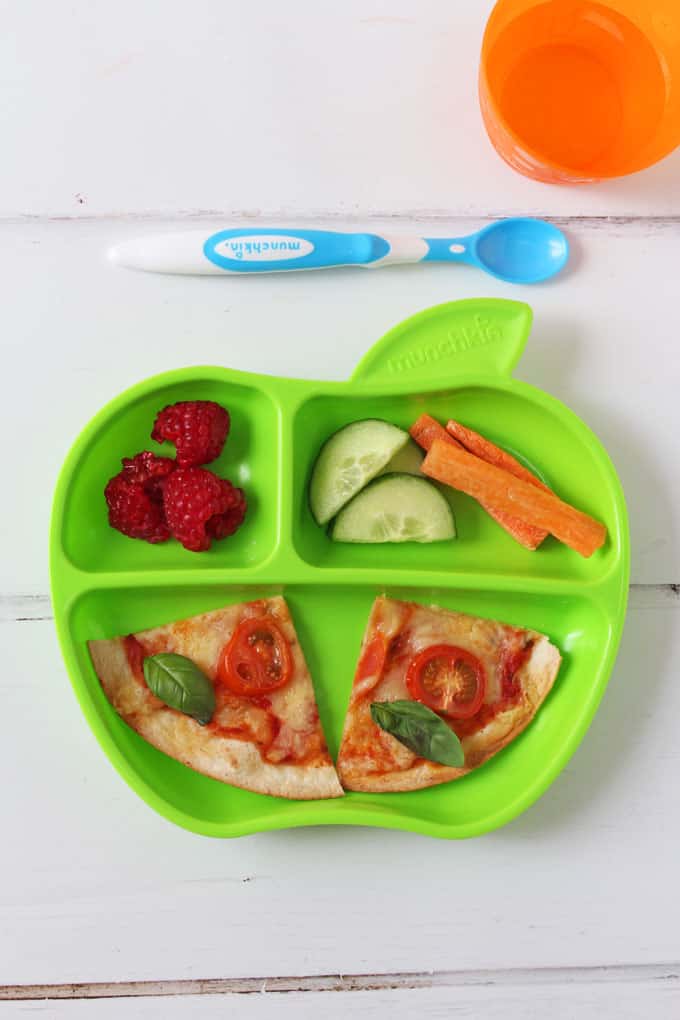
We will need the following products:
- Semolina - 30g;
- Milk 125 ml;
- Water - 125 ml;
- Fruit - 20g.
First, boil the milk with water, gradually adding the grits in a trickle while stirring constantly. Close the ladle, boil for three minutes and keep it closed for 10 minutes so that the boiled porridge is infused and tastier. After the allotted time, add chopped fruit.
As you can see, it is very easy to prepare porridge for a baby: it will take only half an hour at most, and the calorie content of a portion of such porridge will be 197 kcal.
Raisin Cottage Cheese Casserole Recipe
Raisin Cottage Cheese Casserole with dried or fresh fruit is another children's dish that can be served for breakfast or lunch. Moreover, both the one-year-old baby and his older brothers and sisters will enjoy the casserole with pleasure.
We need the following products:
- Cottage cheese - 200 g;
- Raisins - 20g;
- Sugar - 30g;
- Eggs - 1 pc.
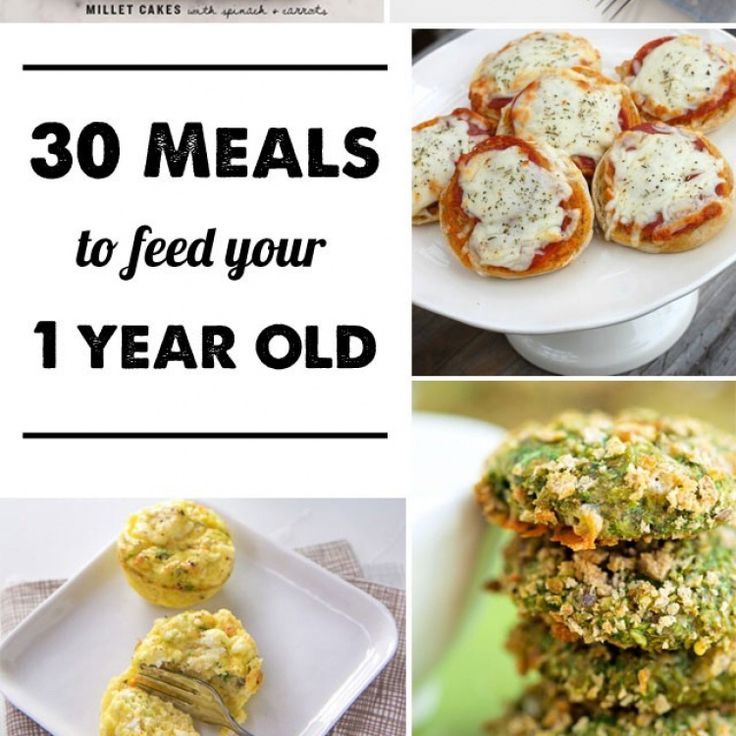 ;
; - Sour cream - 10g;
- Semolina - 50g.
Soak raisins in boiling water, wash thoroughly. Break the cottage cheese from lumps with a fork, beat the egg. Pour sugar and semolina. Mix all ingredients thoroughly. Place the future casserole in a mold, a bucket of a bread machine or a multicooker bowl. Bake on the appropriate program "Baking" until the device gives a signal, and in the oven (gas or electric) - 30 minutes. at 180 gr.
As you can see, preparing lunch or breakfast for a one-year-old child is not difficult. And now we will talk about what kind of milk should be used for the menu of babies of this age. And is the milk of cows and goats so useful?
Goat and cow milk. Harm or benefit?
Gradually, the time comes when your baby can already eat cottage cheese, hard cheese and yogurt. Some curds can be already from 6 months (for example, for baby food). It’s good if you cook the cottage cheese for him yourself from milk or kefir. Some children love homemade cottage cheese more than store-bought. Watch carefully so that there is no allergy to a new type of product.
Some children love homemade cottage cheese more than store-bought. Watch carefully so that there is no allergy to a new type of product.
Young mothers often ask: “When is the best time to start giving cow or goat milk to your child?” But some of them doubt the advisability of such complementary foods and the usefulness of whole cow's milk for the baby. And they do it right!
It is important to keep in mind that regular and frequent consumption of undiluted milk can cause dehydration and, of course, an allergic reaction to the protein in milk. Including milk in the diet too early can cause iron deficiency. The risk of diabetes is also growing, especially in crumbs with “bad” heredity.
Doctors are unanimous in their opinion: the best food of the year is breasts and meals adapted for this age. Minerals and protein predominate in non-adapted cow's milk, but not enough fatty acids and carbohydrates. It has less iron, niacin, vitamin C and zinc in comparison with the mother.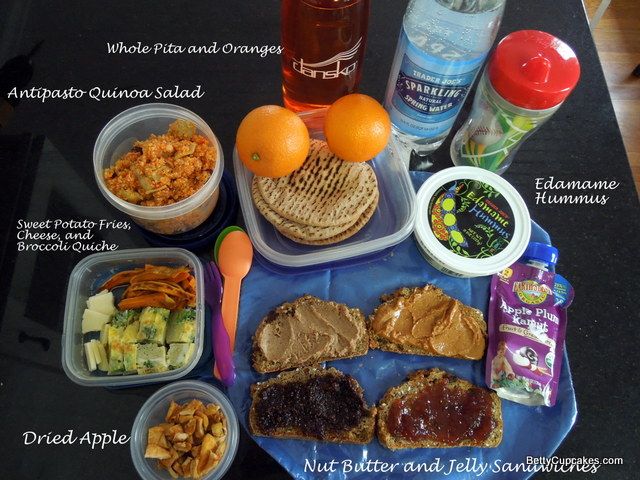
Reasons why it is not recommended to introduce cow or goat milk into the diet of a one-year-old baby include the following:
- It can reduce and replace mother's milk intake.
- It does not contain enough iron.
- Whole milk sometimes causes stomach bleeding and allergies.
- Fatty cow's milk contains an excess of protein and sodium.
Pediatricians speak of goat milk in the same way: it takes too long to digest, causing a load on the gastrointestinal tract of the crumbs and on its other organs.
But what about mothers of artificial babies? How to drink a one-year-old baby if there is no milk at all or it is produced in insufficient volume? Pediatricians recommend that one-year-old children be given only special milk with a high content of vitamins, the abundance of which is observed on the shelves today. Babies from one year old are recommended to give such adapted milk and its derivatives in a volume of up to 500 ml, and as part of cereals - up to 150 ml.
Pediatricians believe that cow's or goat's milk should not be introduced into the menu of one-year-old children.
Child's diet at 12 months. Meat and vegetables
So, we talked in detail about dairy products, about what kind of milk should be given to the baby. And what about meat, vegetable, cereal and egg dishes?
At 12 months old, your baby should already have a varied diet. Now he does not need only breast milk, as he used to, his needs expand with age. Everyone knows that a child's nutrition should be balanced, full of vitamins, rich in trace elements in order to meet the growing needs of the crumbs. And what to feed a child at 12 months? Let's answer this question today.
12 months is the age when you can introduce variety into your baby's diet. The main thing is to make sure that these new products do not cause allergies in the crumbs. You also need to remember that for a baby at this age, food must be properly prepared.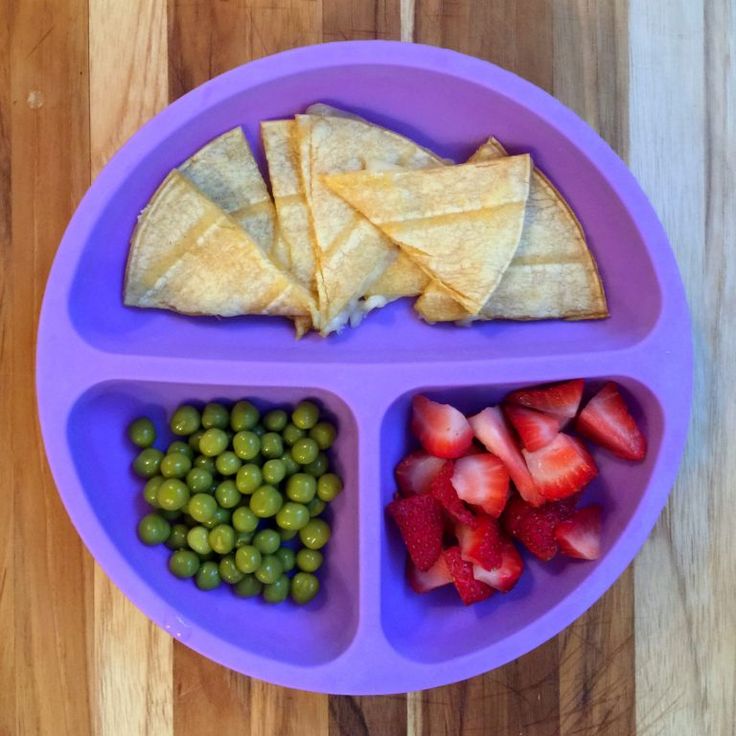 So, what can you offer the baby?
So, what can you offer the baby?
Meat
Protein is an important part of your child's diet. To do this, you can add protein-rich foods - like poultry, fish, beef, lean pork, and various legumes - to your pet's diet. Meat for a child must be thoroughly cooked. Here are some tips for mashing meat:
Before cooking, the meat must be thoroughly washed, the skin and grease must be removed and boiled or stewed for at least 2 hours. Then grind. A blender or meat grinder works well for this. You can also steam vegetables for your baby (they are good as an independent dish or as an addition to meat).
Vegetables
Zucchini, carrots, various types of cabbage (except red), potatoes - all these vegetables are rich in vitamins and very useful. Also, after heat treatment, we wipe the vegetables through a sieve or pass them in a blender - a gentle puree is obtained.
Fish
It's time for another new product, which is introduced from the age of 9 months.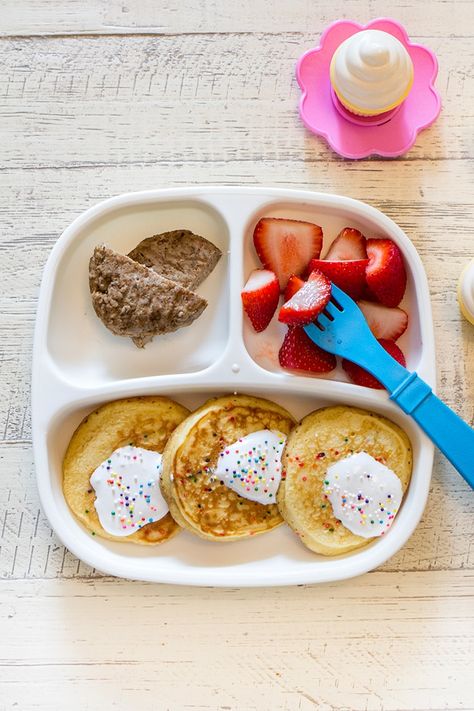 Have you given fish to your baby yet? Which one? As for the fish, to start feeding you should choose cod, trout, perch. It is best to cook it by baking in the oven, or boil the fish soup. Can also be cooked in a steamer. Then the maximum vitamin will also be preserved. Fish for a baby can be prepared according to the following recipe.
Have you given fish to your baby yet? Which one? As for the fish, to start feeding you should choose cod, trout, perch. It is best to cook it by baking in the oven, or boil the fish soup. Can also be cooked in a steamer. Then the maximum vitamin will also be preserved. Fish for a baby can be prepared according to the following recipe.
Fish Soufflé for Dinner Recipe
Moms will definitely like this recipe: kids will happily eat the whole air portion without a trace. Isn't this the dream of every caring mom?
We will need the following products:
- Sea fish - 100g;
- Oatmeal - 10g;
- Eggs - 1 pc.;
- Milk - 50 ml.
Steam the fish, remove the bones. Separate the protein from the yolk. Puree with the rest of the ingredients and the yolk, do not forget to salt. Gently fold the whipped protein into the foam into the mass, then spread the minced meat into molds. Bake in a double boiler, oven or other suitable device for 20 minutes.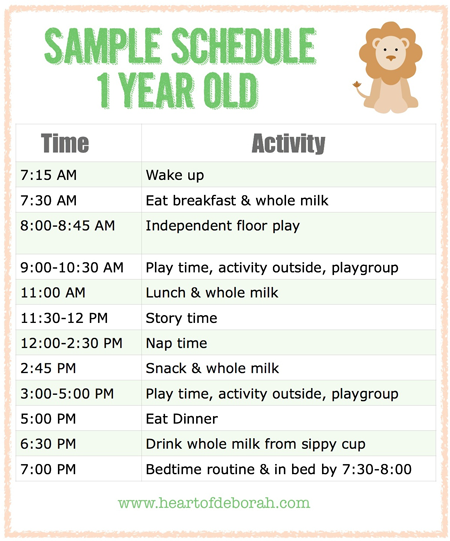
Eggs
Boiled eggs are also gradually included in the diet. But remember, you are still giving your baby only the yolk, just increasing the amount. It is worth starting with a quarter, gradually increasing the volume. But protein can be given only after 15 months. Before that, there is a high probability of allergies.
Cereals
When your baby is 12 months old, you can start feeding him cereals. You can try different pasta. For starters, buying small vermicelli and shells. Don't forget to boil well.
Croutons and bread should already be included in your diet. These products are introduced from about the 9th month.
Fruits
But almost everything can be offered to a child at the age of 12 months. Apples, bananas, pears, apricots. The main rule - if they are in a hard shell or with seeds - is to remove them. Wash thoroughly, pour over with boiling water and cut into small pieces.
All these products are extremely useful for the harmonious development of the crumbs, but did you know that with the help of a certain set of products you can grow a real child prodigy?
How to raise a child prodigy? Feed him!
An extraordinary personality, superior in development to many peers, is, of course, a child prodigy. He begins to show unique abilities early, never ceasing to amaze others with the level of his intellect. Many child prodigies begin to create or invent something before entering school. But in order to reach the highest level of a child's mental abilities, which are not always innate, it is imperative to develop them. How to develop the intelligence of the baby?
He begins to show unique abilities early, never ceasing to amaze others with the level of his intellect. Many child prodigies begin to create or invent something before entering school. But in order to reach the highest level of a child's mental abilities, which are not always innate, it is imperative to develop them. How to develop the intelligence of the baby?
You need to eat right
And this will be confirmed by the experiments and research of specialists. Not so long ago, scientists from the University of Birmingham set up an experiment. Two five-year-old twin brothers began to be fed as follows: one child was left with the same diet, and the other was fed exclusively with the right, environmentally friendly food.
After a short time, it was noticed that the twin, who ate healthy food, turned into a mentally balanced child, and his IQ level, according to the results of the experiment, exceeded that of his brother by fifteen percent.
How to educate a child prodigy or how to feed him
So what kind of food should be fed to a child in order to strengthen and develop the intellect? What should be the child's diet?
First and foremost, carbohydrates provide more than 50% of daily calories. Carbohydrates are simple and complex. The simple ones are sugar, and the complex ones are fiber and starch.
Carbohydrates are simple and complex. The simple ones are sugar, and the complex ones are fiber and starch.
Baby prodigy with mother's milk
The most important product in a baby's nutrition is milk, which must be drunk during the first 2 or even 3 years. It contains many necessary and useful substances: it is milk that gives the body an impetus for the growth of the brain and physical strength.
What else?
What else is recommended to give a child for the development of intelligence? Of course, fruits, honey, seeds are recommended to be eaten without resorting to heat treatment, so as not to destroy their usefulness.
Nuts improve memory and concentration. It is enough to eat only two nucleoli per day!
Vegetables are best cooked with steam, just like red fish. This fish contains an excess of zinc - which improves memory, as well as iodine and polyunsaturated acids for better concentration.
The function of improving attention is also performed by fruits rich in boron: pears, grapes, and broccoli. Nuts with B1, B2 and B3 will reduce fatigue. Legumes and greens contain iron, which helps the child to concentrate.
Nuts with B1, B2 and B3 will reduce fatigue. Legumes and greens contain iron, which helps the child to concentrate.
A few words about meat food. Meat, saturated with proteins, activates the growth of activity. In order for a young organism to develop fully, this product must certainly be included in the baby's diet. Young fresh meat, for example, veal, is very rich in vitamin D. If the meat is properly processed, then it is largely deprived of harmful substances.
I would like to note that scientists have recognized the fact that if you eat two walnut kernels during the day, then a visible improvement in memory is noted on the 30th day. Very useful for brain activity and pine nuts, hazelnuts and fresh salads.
Of course, it's still hard to give all these products to a one-year-old baby, but very soon these useful tips will come in handy in order to raise the smartest child!
If you want to achieve the maximum effect, then try to adhere to the rules and principles of separate nutrition.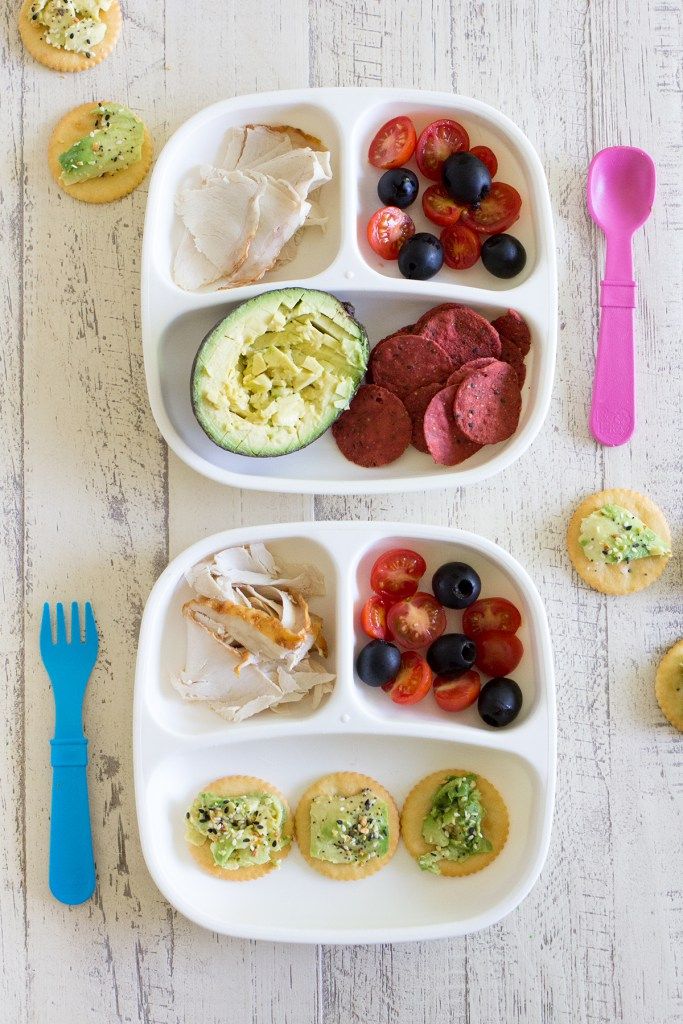

 00 - dinner
00 - dinner 